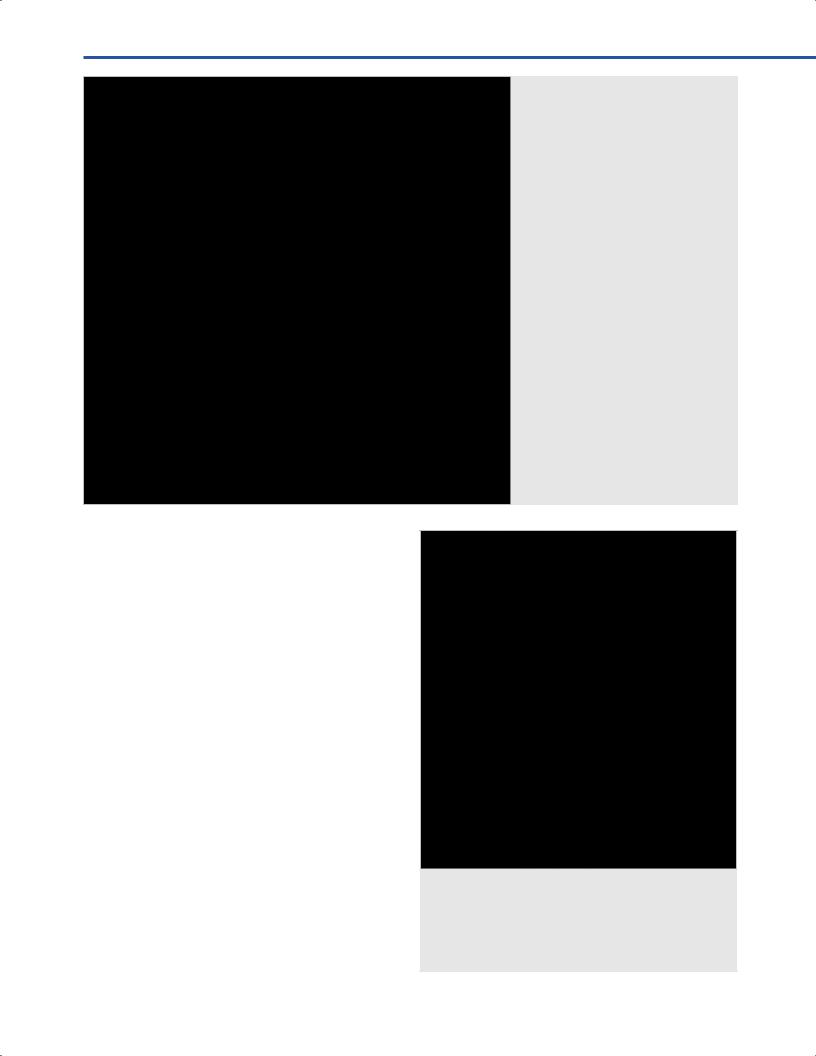
- •Operative Cranial Neurosurgical Anatomy
- •Contents
- •Foreword
- •Preface
- •Contributors
- •1 Training Models in Neurosurgery
- •2 Assessment of Surgical Exposure
- •3 Anatomical Landmarks and Cranial Anthropometry
- •4 Presurgical Planning By Images
- •5 Patient Positioning
- •6 Fundamentals of Cranial Neurosurgery
- •7 Skin Incisions, Head and Neck Soft-Tissue Dissection
- •8 Techniques of Temporal Muscle Dissection
- •9 Intraoperative Imaging
- •10 Precaruncular Approach to the Medial Orbit and Central Skull Base
- •11 Supraorbital Approach
- •12 Trans-Ciliar Approach
- •13 Lateral Orbitotomy
- •14 Frontal and Bifrontal Approach
- •15 Frontotemporal and Pterional Approach
- •16 Mini-Pterional Approach
- •17 Combined Orbito-Zygomatic Approaches
- •18 Midline Interhemispheric Approach
- •19 Temporal Approach and Variants
- •20 Intradural Subtemporal Approach
- •21 Extradural Subtemporal Transzygomatic Approach
- •22 Occipital Approach
- •23 Supracerebellar Infratentorial Approach
- •24 Endoscopic Approach to Pineal Region
- •25 Midline Suboccipital Approach
- •26 Retrosigmoid Approach
- •27 Endoscopic Retrosigmoid Approach
- •29 Trans-Frontal-Sinus Subcranial Approach
- •30 Transbasal and Extended Subfrontal Bilateral Approach
- •32 Surgical Anatomy of the Petrous Bone
- •33 Anterior Petrosectomy
- •34 Presigmoid Retrolabyrinthine Approach
- •36 Nasal Surgical Anatomy
- •37 Microscopic Endonasal and Sublabial Approach
- •38 Endoscopic Endonasal Transphenoidal Approach
- •39 Expanded Endoscopic Endonasal Approach
- •41 Endoscopic Endonasal Odontoidectomy
- •42 Endoscopic Transoral Approach
- •43 Transmaxillary Approaches
- •44 Transmaxillary Transpterygoid Approach
- •45 Endoscopic Endonasal Transclival Approach with Transcondylar Extension
- •46 Endoscopic Endonasal Transmaxillary Approach to the Vidian Canal and Meckel’s Cave
- •48 High Flow Bypass (Common Carotid Artery – Middle Cerebral Artery)
- •50 Anthropometry for Ventricular Puncture
- •51 Ventricular-Peritoneal Shunt
- •52 Endoscopic Septostomy
- •Index

7 Skin Incisions, Head and Neck Soft-Tissue Dissection
Virginio Garcia-Martinez, Luis Porras-Estrada, Carmen Lopez-Sanchez, and Virginio Garcia-Lopez
7.1 Introduction
An adequate planning of skin incision and selected faps are essential in Neurosurgery. In order to do that, it is important to keep in mind the vascular pedicles of the scalp from the cervical region to the orbit. We also must consider the distribution of nerves, as well as muscle fascias and muscle insertions.
Ideally, all incisions should be hidden behind the hairline for cosmetic reasons.
Since specifc cutaneous faps could be performed through diferent myofascial and muscle incisions, the overall standard should consider faps with a wide support, respecting a vas- cular-nervous axis in order to guarantee its functional preservation. This peculiarity optimizes fap viability, thus avoiding possible functional and/or aesthetic sequelae.
In this chapter, we will analyze head and neck soft-tissue structures, including vascular-nervous patterns, establishing the precise location for incisions and faps used in Neurosurgery.
7.2 Soft-Tissue Structures
Head and neck soft-tissue structures consist of the following layers
•Skin (epidermis and dermis).
•Subcutaneous fbro-adipose tissue or superfcial muscleaponeurotic system (and facial muscles).
•Epicranial aponeurosis or galea.
•Temporal or deep fascia (including superfcial and deep layers).
•Muscles.
•Periosteum.
7.3 Cutaneous Cranial Incisions
•Longitudinal incisions (Fig. 7.1)
○Midline-suboccipital incision (Fig. 7.1A).
○Retromastoid (retrosigmoid) incision (Fig. 7.1B).
○Temporal incision (Fig. 7.1C).
•L and/or S-shaped incisions (Fig. 7.1)
Applied for:
○Inter-hemispheric approaches: A sagittal incision is followed by a limb orientated towards the lesion side (Fig. 7.1D).
○Unilateral posterior fossa approaches: A midline suboccipital incision is followed by a limb starting from the Inion, and running along the superior nuchal line to the mastoid process (Fig. 7.1E), also known as “hockey stick incision.”
When L-shaped incisions are not sufcient for surgical exposure, S-shaped incisions might be considered; they are performed by extending the incision with an additional opposed limb to allow a wider exposure (Fig. 7.1D). Some surgeons also prefer a lazy S-shaped incision to those with very sharp turns, especially on the convexity for superior healing and reduced risk of infections.
Fig. 7.1 Longitudinal incisions. (A) Midlinesuboccipital incision: caudal to the inion. (B) Retromastoid (retrosigmoid) incision: longitudinal vertical incision at the
level of the lateral third of the line joining the inion and the mastoid tip. (C) Temporal incision: vertical incision from the zygomatic arch (1 cm anterior to the tragus) and extended as needed. (D) Longitudinal incision with a lateral limb and/or S-shaped incision (longitudinal incision with two opposite limbs). (E) Midline suboccipital incision followed by a limb from the inion along the superior nuchal line to the mastoid process also known as “hockey stick incision.” (F) Combined post-auricular C-shaped incision oriented to skull base approaches, from
the margin of the sternocleidomastoid muscle to the superior temporal line
in most cases. This incision can be combined with others to extend the approach to the anterior and middle cranial fossa, so it is important to preserve the vascularity of both anterior and poster .
Abbreviations: I = inion; L = longitudinal incision; M = mastoid; RSI = retrosigmoid incision; S = S-shaped incision; SNL = superior nuchal line; TI = temporal incision.
45

II Planning, Patient Positioning, and Basic Techniques
•C-shaped incisions or cutaneous faps (Fig. 7.2)
○Fronto-temporal (Fig. 7.2A)
○Bicoronal (Fig. 7.2B)
○Temporal (Fig. 7.2C)
○Parietal (Fig. 7.2D)
○Occipital (Fig. 7.2E)
○Horseshoe incision (Fig. 7.2F)
In surgical anatomy, the dissection techniques and approaches have to be planned thoroughly, in order to obtain a successful reconstruction and prevent possible complications. The general planning should include
○Sufciently wide incisions and cutaneous faps.
○Avoidance of excessive edge tractions.
○Care to preserve myofascial and pericranial structures integrity.
The subgaleal layer is very important for several reasons. This virtual space is almost avascular, easily detachable, resistant to self-retaining retractors, and protects the related vascularnervous pedicles. By means of subgaleal detachments we can obtain extensive layers of pericranium (see Chapter 6). This is of great relevance as the replacement of the dura mater, since this may have to be removed in several instances. Furthermore, it is very useful both for sinuses occlusion in frontal exposures before dural opening and skull base approaches.
Fig. 7.2 C-shaped incisions. (A) Frontotemporal: tragus - temporal line - midline. (B) Bicoronal. (C) Temporal: tragus - temporal line - mastoid process. (D) Parietal. (E) Occipital. (F) Horse-shoe incision. Abbreviations: I = inion; M = mastoid; SNL = superior nuchal line; Z = zygoma.
7.4 Cranial Vascular-Nervous
Axes
Several vascular pedicles, originating from the external carotid artery, reach the scalp. They establish anastomosis among each other and with the opposite side.
7.4.1 Classifcation
•Anterior group
○Supraorbital pedicle (supraorbital artery and lateral branch of supraorbital nerve).
○Medial-frontal pedicle (supratrochlear artery branches and medial branch of supraorbital nerve).
•Lateral group
○Temporal pedicle (superfcial temporal artery and auriculo-temporal nerve).
○Mastoid pedicle (posterior auricular artery and lesser occipital nerve).
•Posterior group
○Occipital pedicle (occipital artery, greater occipital nerve and medial branch of the third cervical dorsal nerve).
46

7Skin Incisions, Head and Neck Soft-Tissue Dissection
7.5 Vascular-Nervous Structures
of the Neck
•Cervical plexus (in particular, the great auricular nerve).
•Facial nerve (VII cranial nerve): mandibular branch.
•Spinal accessory nerve.
•Carotid sheath.
•Vertebral artery and glossopharyngeal (IX), vagus (X) and hypoglossal (XII) cranial nerves.
7.6 Flaps and Vascular-Nervous
Axes
•At the frontal level, in case of orbital exposure, the periosteum must be detached reaching the supraorbital notch
(Fig. 7.3) (see Chapter 6).
Fig. 7.3 Frontal view of the orbital fossa. Note the “V” cut must be performed when the supraorbital foramen is present. Abbreviations: SO = supraorbital area; ST = supratrochlear area.
•At the temporal level, just above the zygomatic arch, the superfcial temporal artery appears subcutaneously. The temporal and frontal branches of the facial nerve run superfcial to the zygomatic arch, at about 2 cm from the tragus, and run parallel and anterior to the superfcial temporal artery
(Fig. 7.4).
Therefore, the incision must preserve the frontal branch of the facial nerve, by sectioning the superfcial layer of deep temporal fascia, avoiding undesirable eyebrow asymmetry.
Immediately after this step, the temporal muscle is detached leaving a cuf of muscle for further reconstruction (Fig. 7.5).
•At occipital level (Figs. 7.6, 7.7) attention should be paid to the occipital artery and greater occipital nerve. Its injury may lead to a sensitive alteration or neuralgic pain at the ipsilateral occipital region. Artery and nerve are located about 3 cm lateral to the inion, between trapezius muscle fbers.
Fig. 7.4 Lateral sub-fascial dissection in a cadaveric specimen. Abbreviations: F = frontal branches of facial nerve; FA = facial artery; JV = jugular vein; MS = masseter muscle; PD = parotid duct; PG = parotid gland; S = sternocleidomastoid muscle; STA =
al temporal artery; T = temporal branches of facial nerve.
47

II Planning, Patient Positioning, and Basic Techniques
This region contains three muscle layers:
•Superfcial layer: Sternocleidomastoid muscle and splenius capitis (Figs. 7.6, 7.7A).
•Middle layer: Longissimus capitis and semispinalis capitis
(Fig. 7.7B).
•Deep layer: Rectus capitis posterior major, obliquus capitis superior and obliquus capitis inferior (Figs. 7.7C, 7.7D).
The muscles of the deep layer defne the suboccipital triangle, where the V3 horizontal segment of the vertebral artery and the frst cervical nerve dorsal ramus can be exposed. The greater occipital nerve appears below, in ascending direction.
7.7 Latero-Cervical Flaps
Cranial incisions reaching the latero-cervical region should avoid any injury to the carotid sheath and cranial nerves.
The basic procedure involves a post-auricular C-shaped incision, which runs from the fronto-temporal region to the anterior edge of the sternocleidomastoid muscle (Fig. 7.1F); it is performed for approaches directed toward the cavernous sinus and middle cranial fossa, temporal region, posterior cranial fossa, mastoid process, occipito-cervical region, carotid sheath and descending cranial nerves. Through this fap, extended middle fossa approach, mastoidectomy, exposure of posterior fossa and upper cervical region, as well as cervical vascular-nervous control can be performed.
As key references during the dissection, the surgeon must pay attention to the posterior edge of the sternocleidomastoid muscle (Fig. 7.8), identifying the greater auricular nerve, 2-3 cm below the mastoid tip. The transverse process of the atlas (C1)
Fig. 7.5 (A–D) Schematic surgical view of the temporal approach showing the incision to preserve t al temporal artery and the frontal branch of the facial nerve.
al layer of deep temporal fascia
is sectioned leaving a c |
le for |
|
further re-approximation of the musc |
||
Abbreviations: CM = c |
le; |
|
F = frontal branch of the facial nerve; |
||
MF = musc |
T |
al temporal |
artery. (Figure provided courtesy of Dr. Manuel Royano Sanchez.)
Fig. 7.6 Dor al dissection in a cadaveric specimen showing trapezius musc rs orientation as well as sternoclei - domastoid, splenius capitis, semispinalis capitis, levator scapulae, rhomboid minor and supraspinatus muscles in the left side. Abbreviations: LS = levator scapulae; RM = rhomboid minor;
S = sternocleidomastoid muscle; SSC = semispinalis capitis; SU = supraspinatus muscle; T = trapezius muscle; SC = splenius capitis.
48

7Skin Incisions, Head and Neck Soft-Tissue Dissection
Fig. 7.8 Preparation of a dissection in a cadaveric specimen to observe t al branches of the cervical plexus in relation with the sternocleidomastoid and infra-hyoid muscles. XI cranial nerve runs to the trapezius muscle.
Abbreviations: GAN = greater auricular nerve; IH = infra-hyoid muscles; S = sternocleidomastoid muscle; SCN = supraclavicular nerve; TCN = transverse cutaneous nerve; XI = eleventh cranial nerve.
Fig. 7.7 Schematic drawing showing the lateral aspect of the head and neck to indicate the muscular layers. (A) Sternocleidomastoid muscle and splenius capitis.
(B) Longissimus capitis and semispinalis capitis. Please note that longissimus capitis attaches superiorly to the posterior aspect of the mastoid process. (C) Rectus capitis posterior major, obliquus capitis superior and obliquus capitis inferior. Greater occipital nerve and occipital artery. (D) Lateral view to indicate the mastoid process, facial nerve, trapezius muscle as well as cranial nerves X, XI and XII and sympathetic cervical component.
Abbreviations: 1 = rectus capitis posterior major; 2 = obliquus capitis superior; 3 = obliquus capitis inferior; FN = facial nerve; GON = greater occipital nerve; LC = longissimus capitis; M = mastoid; OA = occipital artery; S = sternocleidomastoid muscle; SC = splenius capitis; SSC = semispinalis capitis; SY = sympathetic cervical component; T = trapezius muscle; XI = accessory nerve. (Figure provided courtesy of
Dr. Manuel Royano Sanchez.)
must be recognized (the tip can be palpated) to identify, about 1 cm infero-lateral to it, the XI cranial nerve running between the jugular vein and digastric muscle (posterior belly) and reaching sternocleidomastoid muscle medially.
The anatomic landmarks to identify the VII cranial nerve include the following:
•1 cm ventral-caudal to “the pointer” (the tip of the external canal cartilage).
•1 cm medial to the ventral edge of the posterior belly of digastric muscle.
•7 mm distal to the end point of tympano-mastoid fssure
(Fig. 7.7D).
Any cranial surgery must be carefully planned by choosing the most appropriate incisions and faps and by performing a thorough dissection by layers. A wide anatomical knowledge of the anatomy is absolutely necessary to achieve a successful result. Muscular, vascular and nervous complications should be avoided by all means in order to prevent ischemia and/or nerve lesions.
References
1.Fukushima T, Bloch JI. Manual of skull base dissection. AF1996. Neurovideo Inc
2.Gray H, Standring S, Ellis H, et al. Gray’s Anatomy: the anatomical basis of clinical practice. Edinburgh: Elsevier Churchill Livingstone;2005
3.Mitz V, Peyronie M. The superfcial musculo-aponeurotic system (SMAS) in the parotid and cheek area. Plast Reconstr Surg 1976;58(1):80–88
49
